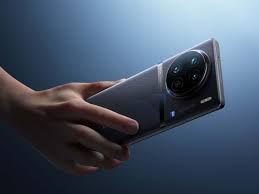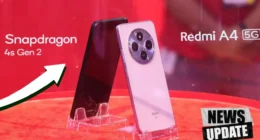The Vivo X90 Pro, which was unveiled for the Chinese market in November, is being released internationally. The X90 Pro is unique for its usage of Sony’s latest 1-inch 50-megapixel IMX989 camera sensor, and Vivo is keen to highlight the low-light photography capabilities such a huge (for a smartphone) sensor enables. It is joined by the non-Pro X90, which has a more restricted availability outside of China.
However, Vivo remains extremely ambiguous about when the phones will be available for purchase outside of China. The only information available at this time is that they will be launching progressively across markets, beginning with Malaysia, where the X90 Pro will cost 4,999 MYR (about $1,174 / €1,073) and the X90 will cost 3,699 MYR (approximately $873 / €793).
The X90 Pro is neither the first smartphone to use a 1-inch sensor, nor is it the first to utilise this particular Sony component. Last year, Xiaomi announced the Xiaomi 12S Ultra and Xiaomi 13 Pro with Sony’s IMX989 sensor, however neither model has been sold abroad (yet). This makes the debut of Vivo today more meaningful for overseas purchasers.
As with many of Vivo’s prior handsets, neither the X90 nor the X90 Pro will be released in the United States. The X90 Pro is being released in select European regions, including as the United Kingdom, France, Germany, Italy, Spain, Poland, the Czech Republic, Austria, Romania, Croatia, Slovenia, Greece, and Serbia, as well as India and a number of Southeast Asian nations. In contrast, the X90 is releasing exclusively in India and other Asian markets. There is no indication that the X90 Pro Plus, the highest-end model unveiled in China last year, would be released internationally.
As is always the case with smartphone photography, camera hardware is only a portion of the story when it comes to the quality of a smartphone’s images. This is why Vivo makes such a big deal about the unique V2 chip used in the X90 series, which, according to the company, can minimise visual noise at high ISO settings for better low-light photographs and produce more natural-looking HDR images.
Additional goofy software camera features are incorporated for good measure. A Zeiss-branded “Cine-flare Portrait” effect seeks to recreate a lens flare effect in portrait photographs, whereas a “Miniature Effect” appears to create a tilt-shift-style effect by selectively blurring a photo in a manner that can make skyscrapers and city streets appear miniature.
In addition to its main 1-inch, 50-megapixel sensor with a 23mm focal length, the X90 Pro features an extra 50-megapixel sensor with a 50mm-equivalent focal length for portraiture, as well as a 12-megapixel ultrawide camera. All three are housed under a huge circular camera bump on the back of the device, whose design is reminiscent of the Xiaomi 12S Ultra.
The X90 Pro’s internal components include a MediaTek Dimensity 9200 processor, 12GB of RAM, and 256GB of storage. It supports up to 120W of wired charging and 50W of wireless charging, with Vivo stating that wired charging can fully recharge the battery in under thirty minutes. It has a 6.78-inch OLED display with 1260p resolution and two stereo speakers. Internationally, it is only available in black with a vegan leather texture and an IP68 designation for dust and water protection. Vivo was originally unable to provide information on how many years the X90 Pro will receive important Android and security updates after its release, but we will update this article if and when the company responds.
Related Articles:
Google, Microsoft and 15 other technology companies headed by Indian-origin executives
There Is a New “vintage” Technology that Generation Z Is Obsessed With.
It Appears that Google Will Debut Their Chat Gpt Clone on February 8.







